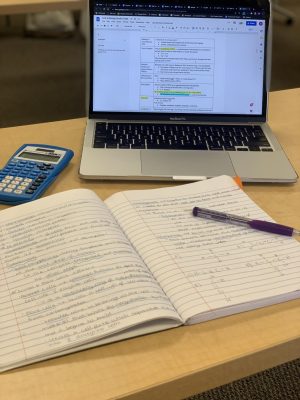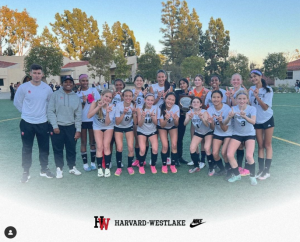by Jenny Li ’19
When Keon Mazdisnian ’19 first ran along the LA River for cross country practice, he was amazed at what he saw.
“When I ran, I expected to see the water to where I could touch it. But, it’s not like that. It doesn’t look like water—it looks like sewage. There’s nothing really to look at. I think it’s a shame that there’s a chance for a great river, but we don’t care or put effort into it,” Mazdisnian said.
Prior to that run, Mazdisnian had never realized the full extent of the drought, which he had previously called an “overrated issue.”
Why is the drought considered overrated if it’s worse than people think? Anja Clark ’19, who moved from England less than two years ago, believes that she is more worried about the drought than most people here.
“When I moved. . .I realized how bad the drought was because the contrast in the amount it rains is so massive. . .People who have grown up here are used to the lack of rain, and they might not realize just how bad the drought is because they don’t think it’s supposed to rain,” Clark said.
Most of our state is in an “extreme to exceptional drought, and the crisis has now entered its fourth year,” according to newsweek.com. The plummet down to Drought Level Four (exceptional drought ranking), the most intense drought on the scale, was incredibly quick. In 2011, only patches of Northern and Southern California were abnormally dry, the Drought Level One. The maps at the bottom show the quick drop of California’s drought level through the years.
It isn’t just about the lack of rain, however. The Colorado River, where the ninth grade students rowed just a few months ago, has been a problem for the past century, according to Propublica. Since 1905, the water divided for the states is less than the amount that actually has flown through the river. Because of this, not only California, but almost every state to the west of the Rockies, has experienced a drought for the past century.
This feels overrated because people don’t seem to feel the impacts. A school survey shows that though __% of students believe the drought is a major issue, only __% think that the drought majorly impacts them.
“I really feel like the drought impacts us. . .I don’t think it’s such a big deal. I don’t think it’s everywhere. We don’t use that much water,” Christopher Ladreyt ’21 said.
The most we may see is a dried-up lawn, or the inconvenience of having to ask for water before having it served to us immediately. However, the California drought impacts every single one of us individually; we just don’t realize it. According to the Department of Food and Agriculture, “the state produces nearly half of US-grown fruits, nuts and vegetables. Across the nation, US consumers regularly purchase several crops produced solely in California.” Almonds, the second wealthiest commodity in California, earns $5.9 billion dollars and uses 1.1 gallons of water per single almond produced. With the decrease of water, crops become more valuable, and with the population growing every second, not only California’s grocery markets, but those all over the nation will be too expensive for those who cannot afford it.
Here are Five Tips to Make a Small Impact with Water Usage:
- Don’t waste food!
Farmers use up to 80% of the state’s water supply, according to the Washington Post. To decrease the amount of water needed for lots of crops, decrease the amount of food produced by wasting less food. Eat all leftovers and try to limit overbuying produce.
- Wait to do laundry
Washing machines use the same amount of water when washing one piece of clothing and a full load. To save water, try to do laundry only when the washing machine is full.
- Save shower water
Save the water that is used while waiting for the water warming up in the shower with a bucket, and use it to water the grass outside or flowers around the house.
- Take shorter showers
According to the US Environmental Protection Agency, an average American shower uses 2.5 gallons of water per minute. Taking a five minute shower would use 12.5 gallons and would be better for the environment and the water bill than to take 20 minute showers and use 50 gallons of water.
- Turn off the sink
Limit your water usage by turning off the sink while washing hands and brushing teeth.






